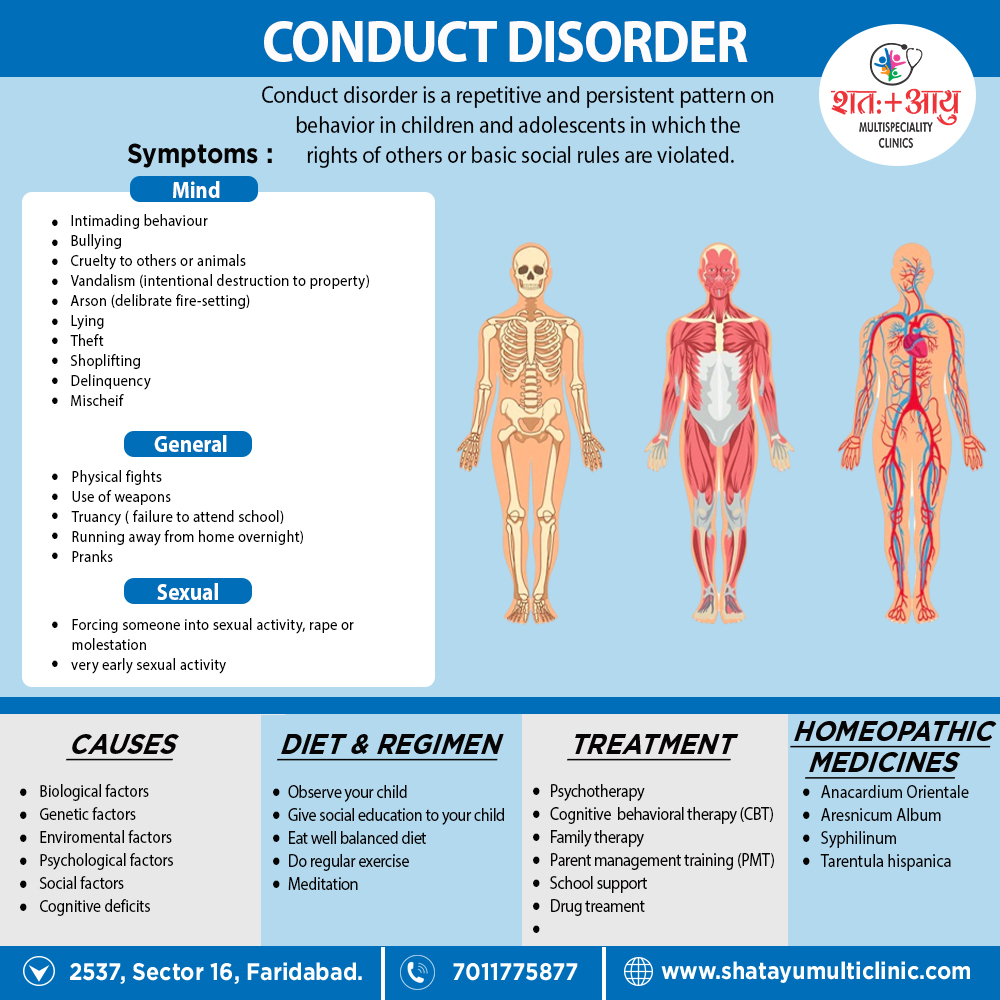It is estimated that 2-16% of children in the U.S. have conduct disorder.
It is more common in boys than in girls and most often occurs in late childhood or the early teen years.
This is not uncommon for children and teens to have behavior-related problems at some time during their development.
However, the behavior is considered to be a conduct disorder when it is long-lasting and when it violates the rights of others, goes against accepted norms of behavior and disrupts the child’s or family’s everyday life. [2]
The child or adolescent usually exhibits these behavior patterns in a variety of settings at home, at school, also in social situations and they cause significant impairment in his or her social, academic, and family functioning. [1]

